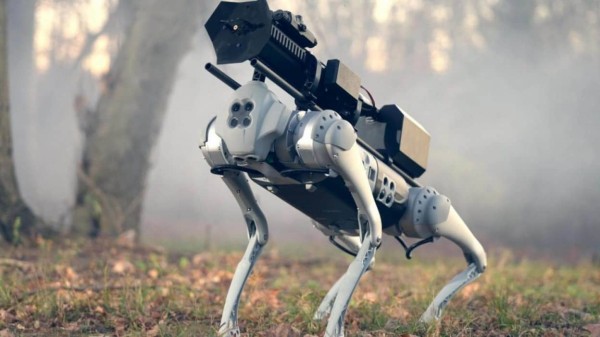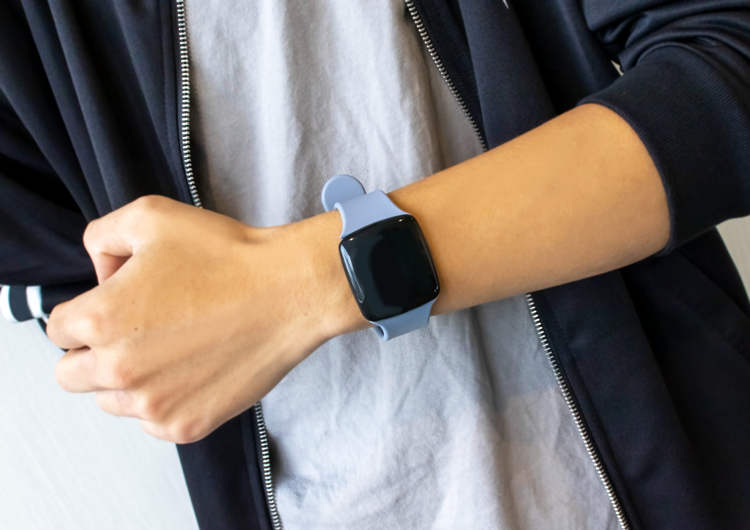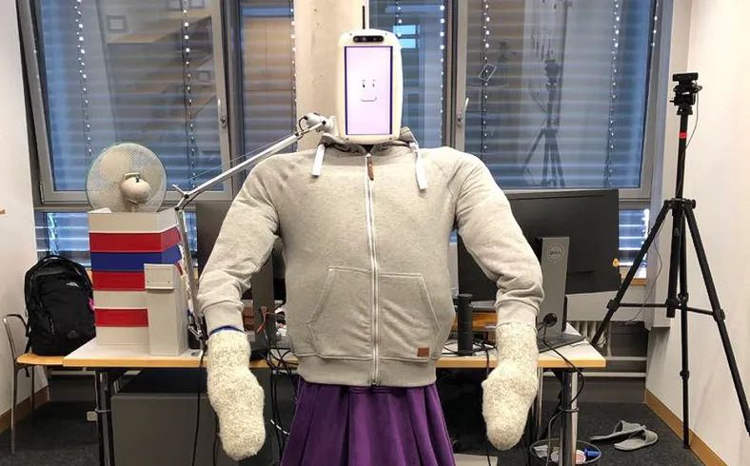Meet Thermonator, the Flamethrower-Wielding Robot Dog

American company Throw Flame recently unveiled its latest product, Thermonator, the world’s first flamethrower-wielding robot dog. Robot dogs have been around for a while now, and in countries like China, they’re actually competing against actual pooches. But it turns out that these four-legged robots can be more than lifeless pets. For example, Throw Flame, a […]
iPhone Still Works Perfectly After Spending 33 Days on Bottom of the Ocean

A Minnesota man who lost his iPhone 14 while kayaking in Hawaii got the shock of his life when a complete stranger got in touch and told him that they had found his handheld and that it was working perfectly. 27-year-old Zach Siggelkow of St. Anthony Village, Minnesota, was on vacation at Waikiki Beach, Hawaii, […]
Japanese Power Tool Company Launches World’s First Cordless Microwave Oven

Japanese power tool manufacturer Makita recently unveiled a first-of-its-kind portable microwave oven powered by two large batteries that can be recharged and replaced on the go. Mockups of a cordless microwave have been doing the rounds online as April’s fools for years, but this year Japanese power tool giant Makita decided to surprise everyone with […]
This Ingeniously-Designed Ocean Vessel Only Looks Like It’s Sinking

The aptly-named R/P FLIP is an open ocean research platform that can flip between the horizontal and vertical position at the flip of a button and is often mistaken for a capsizing ship. Owned by the U.S. Office of Naval Research, the FLIP (short for ‘floating instrument platform’) is a 108-meter-long ocean research platform designed to partially […]
This Robotic Arm Will Refuel Your Car So You Don’t Have To

Danish startup Autofuel has developed a robotic arm capable of refueling a variety of vehicles at gas stations without any kind of human assistance. A Neste fuel station in Finland is currently the only place in the world where you can have your car refueled by a robot. It’s the pilot site chosen by Autofuel […]
Real-Life T-1000 – Scientists Create Robot That Can Liquify Its Body and Then Resolidify

A team of scientists has created a tiny robot that can melt itself and then resolidify on command in order to pass through tight spaces. Remember Terminator 2’s terrifying antagonist, the advanced T-1000 shapeshifting android? It was made out of this liquid metal that allowed it to melt and then resolidify and cause all kinds […]
Blind Computer Scientist Creates AI-Powered Suitcase For the Visually Impaired

AI Suitcase is a smart suitcase developed by a blind computer scientist to aid the visually impaired in navigating their surrounding more efficiently without the aid of white canes or guide dogs. 65-year-old Chieko Asakawa has been completely blind since she was only 14, following a tragic accident. A computer scientist and also the director […]
Japanese Company Develops Device That Rates the Deliciousness of Soba Noodles

A Nagano-based company recently announced that it had created the world’s first noodle taste analyzer, a machine that can scientifically estimate the tastiness of soba noodles within seconds. Japan’s Nagano Prefecture is well-known for its soba noodles, a popular variety made with buckwheat flour. To honor the prefecture’s soba noodle production, local tool-maker Yatsurugigiken Inc. […]
Stone Watch – The World’s Dumbest Smartwatch

Smartwatch manufacturers are constantly trying to one-up each other with feature-rich devices, but one Japanese company prides itself on making the world’s dumbest smartwatch. The Stone Watch is not a smartwatch, it’s just designed to look like one. Created by Japanese capsule toy maker Tama-Kyu, the low-tech accessory doesn’t even tell time, let alone feature […]
AcryPhone – A Phone-Shaped Slab of Acrylic to Help You Beat Smartphone Addiction

The AcryPhone is a rudimentary device designed to mimic the look and feel of a smartphone in order to help users conquer their handheld addiction. As much as we try to deny it, most of us are addicted to smartphones. We try to limit the time we spend looking at them, but we constantly find […]
HuggieBot 3.0 – Robot Uses Science to Deliver the Perfect Hug

HuggieBot 3.0 is the third iteration of a robot designed by a team at the Max Planck Institute for Intelligent Systems to deliver the perfect hug. Hugging probably isn’t the first thing that comes to mind when thinking about things that robots could help humankind with, but a team of scientists at the Max Planck […]
Students Invent “Invisibility Cloak” That Makes People Invisible to AI Security Cameras

A team of graduate students at China’s Wuhan University recently unveiled an innovative “invisibility cloak” that circumvents AI-powered security cameras. China is one of the world’s most heavenly surveilled countries, with AI-powered cameras being used for everything from monitoring employees’ toilet habits to students’ attention in classrooms. But as advanced as these surveillance systems may […]
Young Girl Who Lost an Eye in Car Accident Becomes Bionic Eye Master

A young Chinese woman who lost an eye in a serious car accident dedicated her life to creating prosthetic eyes that glow different colors. In 2013, Xia Tong lost one of her eyes in a car accident. She was only 18 at the time, and she had it replaced with a prosthetic eye. Instead of […]
Man Pays With His Forearm Thanks to Scannable Payment App Barcode Tattoo

A Taiwanese man has been getting a lot of attention on social media after getting a payment app barcode permanently tattooed on his forearm. The unnamed man recently took to the Taiwanese social media platform Dcard to share a functional barcode tattoo. Apparently, they had been contemplating getting a tattoo for a while, but they […]
This Company Creates the World’s Smallest TV Sets

TinyCircuits, a hardware company specializing in creating tiny electronic devices, recently unveiled the world’s smallest television sets. When it comes to modern TVs, the general consensus is that bigger is better, but one company is trying to prove that it can be successful by going against the trend. TinyCircuits, an open-source hardware company that makes […]
